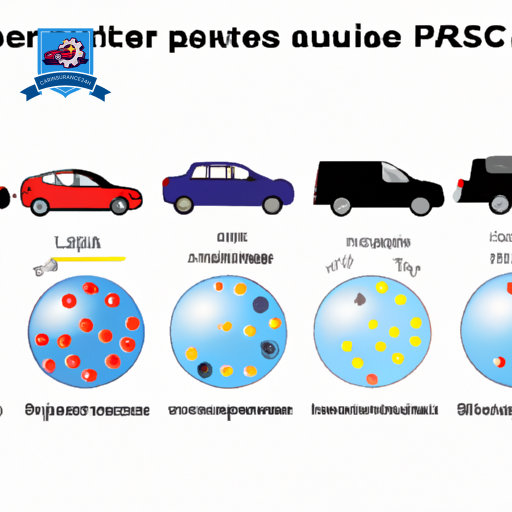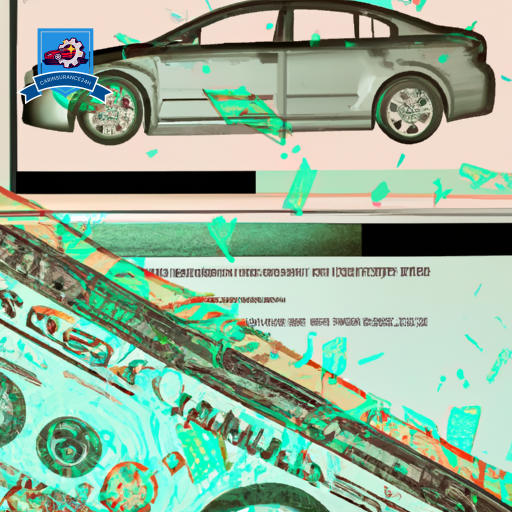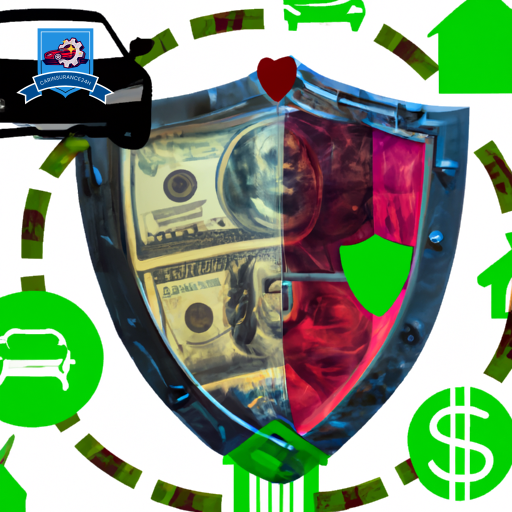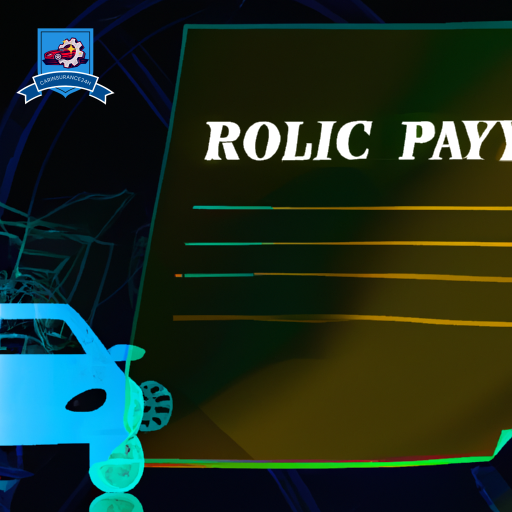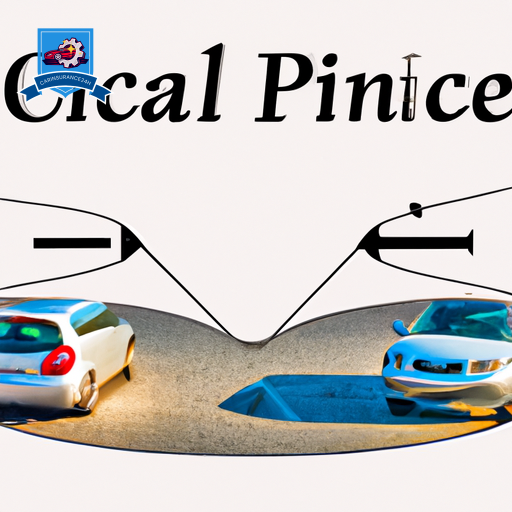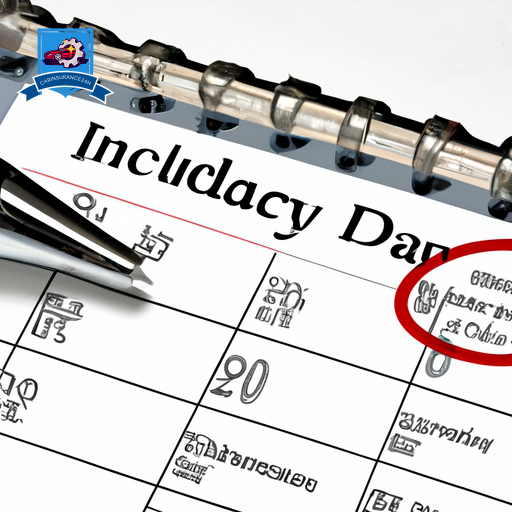Selecting the appropriate car insurance limits is a critical decision that demands a nuanced understanding of one’s financial landscape, asset value, and potential risk exposure. This process involves a thorough assessment of your financial situation to make sure that you’re adequately protected without overextending on premiums.
Liability coverage, the backbone of any car insurance policy, requires careful consideration to safeguard against the financial repercussions of accidents. Additionally, understanding the role of deductibles and the potential benefits of umbrella policies can greatly impact your decision-making process.
As we explore these considerations further, one must recognize the importance of regularly reviewing and adjusting coverage to align with evolving financial circumstances and risk profiles.
Understanding Insurance Limits

Understanding insurance limits is essential in determining the extent of coverage and financial protection your car insurance policy provides. Insurance limits refer to the maximum amount an insurance company will pay for a covered claim. These limits are critical in defining the scope of protection against various risks, including accidents, theft, and natural disasters. When choosing insurance limits, individuals must consider the potential costs of claims and the level of risk they are willing to assume.
Policy definitions play a significant role in understanding insurance limits. Each policy contains specific terms and conditions that outline what is covered and the limits of coverage. It is essential to familiarize oneself with these definitions to grasp the extent of protection offered. For instance, liability coverage limits will determine how much your insurer will cover for damages or injuries you cause to others in an accident.
Coverage exclusions are equally important when considering insurance limits. These exclusions list the circumstances and events that a policy does not cover. Understanding these exclusions helps prevent surprises in the event of a claim, ensuring that policyholders are aware of the gaps in their coverage. It is essential to closely review both policy definitions and coverage exclusions to make informed decisions about insurance limits.
Assessing Your Financial Situation

Before determining the appropriate car insurance limits, it is important to assess your financial situation thoroughly. This involves evaluating your current assets, considering potential future earnings, and reviewing any existing debts.
Such an assessment will inform the decision-making process, ensuring that your insurance coverage matches your financial capacity and protects your assets effectively.
Evaluate Your Assets
Evaluating your assets is a crucial step in determining the appropriate level of car insurance coverage to protect your financial well-being. This process involves taking a thorough look at your financial resources, including savings, investments, property, and any other valuables that could be at risk in the event of a car accident.
Understanding the full scope of your assets aids in selecting insurance limits that not only meet legal requirements but also offer sufficient asset protection. By accurately evaluating what you own, you can make informed decisions about how much coverage is necessary to shield your financial health from potential liabilities.
This careful consideration ensures that your insurance policy provides the right balance of protection without overextending on premiums for coverage that exceeds your actual needs.
Consider Future Earnings
After evaluating your current assets, it is equally important to contemplate your future earnings when determining the appropriate car insurance coverage. Your career trajectory plays a vital role in this assessment. As your professional life progresses, your income may increase, potentially altering your financial landscape and the need for more extensive insurance coverage.
Additionally, investment accounts, another significant aspect of your financial portfolio, should be considered. These accounts often grow over time, contributing to your overall net worth. Factoring in the projected growth of your investments can provide a clearer picture of your future financial situation.
Understanding the trajectory of your career and the potential growth of your investment accounts is essential in selecting car insurance limits that align with your evolving financial goals.
Review Existing Debts
In addition to evaluating future earnings and assets, appraising your current liabilities, including existing debts, is essential for determining the best car insurance coverage for your financial situation. Understanding your debt level, such as loans or credit card balances, can influence your insurance decisions. High levels of debt might necessitate more affordable premiums, while a solid strategy for debt consolidation could free up resources for thorough coverage.
Your credit score, a reflection of your debt management, can also impact your insurance rates. Insurers often use credit scores to gauge risk, with higher scores potentially leading to lower premiums. As a result, a thorough review of debts and effective management strategies, like consolidation, can not only improve your financial health but also optimize your car insurance costs.
Evaluating Your Asset Value
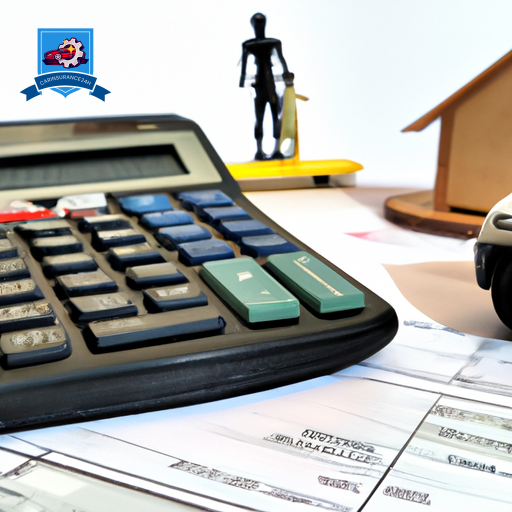
As we shift to evaluating your asset value, it is critical to contemplate three key factors: determining your net worth, evaluating your risk exposure, and understanding the extent of liability coverage needed.
Recognizing your net worth provides a financial baseline, which is instrumental in making informed decisions about the level of car insurance necessary to safeguard your assets.
Moreover, a thorough evaluation of risk exposure and a clear understanding of liability coverage options make certain that your insurance selections are both all-encompassing and aligned with your financial security objectives.
Determine Net Worth
Determining your net worth is a critical first step in evaluating the total value of your assets, which is essential when choosing car insurance limits. This process, central to wealth calculation, involves listing all assets and liabilities to understand your financial standing. Investment strategies play a significant role in this scenario, influencing the growth and protection of your assets.
| Assets | Liabilities | Net Worth |
|---|---|---|
| Savings | Mortgage | |
| Investments | Credit Card Debt | |
| Property | Loans |
This table illustrates a simplified approach to calculating net worth, by subtracting total liabilities from total assets. Understanding this balance is pivotal in making informed decisions about the level of car insurance coverage necessary to protect your financial health and future.
Assess Risk Exposure
Evaluating your asset value is important for understanding risk exposure and ensuring appropriate insurance protection. When considering car insurance, it’s essential to assess how your driving habits and location risks could potentially increase your vulnerability.
-
Driving Habits: Frequent driving, especially in high-traffic areas, raises the probability of accidents, necessitating higher coverage limits.
-
Location Risks: Living in areas prone to natural disasters, high theft rates, or vandalism can similarly increase the risk to your vehicle, influencing your insurance needs.
-
Asset Value: The more valuable your car and other assets are, the more you stand to lose in the event of an incident, pushing the need for all-encompassing coverage.
Understand Liability Coverage
Understanding your asset value lays the foundation for comprehending the importance of liability coverage in your car insurance policy. Liability coverage is pivotal as it protects you financially if you’re found legally responsible for causing harm to another person or their property. Evaluating your asset value helps in determining the appropriate coverage limits, ensuring that your assets are adequately protected in the event of a claim.
Coverage types vary, including bodily injury and property damage liability, each with specific policy exclusions that must be carefully considered. It’s essential to understand these exclusions to avoid unexpected gaps in coverage. By accurately evaluating your asset value, you can select a policy that provides sufficient protection, aligning with your financial security and risk management strategy.
Considering Liability Coverage
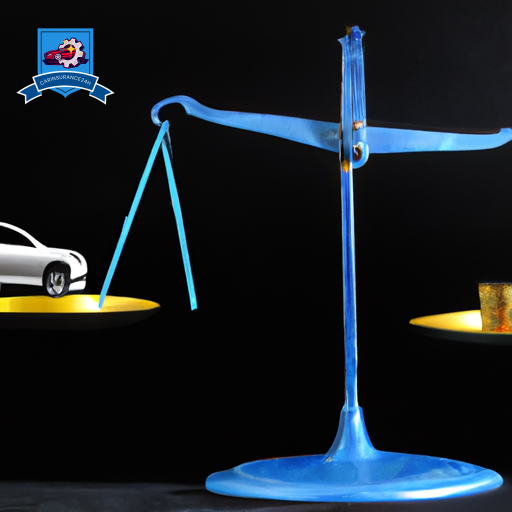
When selecting car insurance, it is crucial to ensure the essential level of liability coverage to ensure sufficient protection in the event of an accident. Understanding liability coverage involves knowing how it works to protect you financially if you’re found at fault for causing damage or injury to another party. This coverage is the backbone of most car insurance policies, providing vital protection that can save you from significant financial distress.
The importance of choosing the right liability limits cannot be overstated. Here are three reasons why:
-
State minimums may not be enough: Every state has its set minimum requirements for liability coverage, but these amounts may not cover all expenses in a severe accident. Incurring costs beyond your coverage limits means you’ll be paying out of pocket, which can lead to financial hardship.
-
Policy types vary widely: Liability coverage comes in different forms, including bodily injury liability and property damage liability. Each type addresses different risks, and choosing the right balance is essential for vital protection.
-
Protection against lawsuits: Adequate liability coverage can shield you from lawsuits that may arise from accidents you’re responsible for. This can include legal fees, settlement costs, and any judgments against you, safeguarding your personal assets.
Factoring in Deductibles
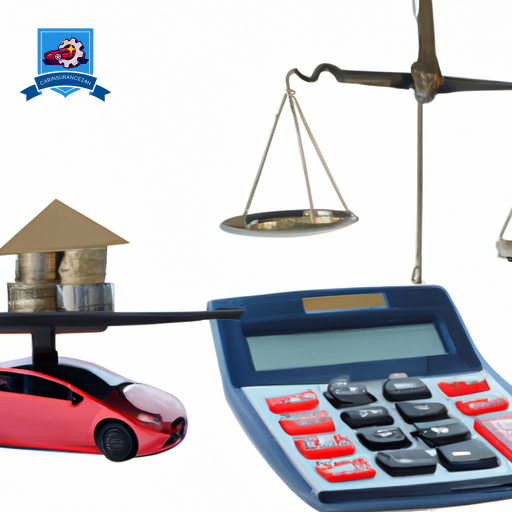
Considering deductibles is an important step in tailoring your car insurance policy to meet your financial needs and risk tolerance. A deductible is the amount you agree to pay out of pocket before your insurance coverage kicks in to cover the rest of a claim. This figure is pivotal in the claim process, directly influencing the speed and ease with which claims can be settled. Deductibles play a critical role in premium calculations, representing a shared risk between the policyholder and the insurance company.
Selecting a higher deductible often results in lower premium payments. This is because, by choosing a higher out-of-pocket cost, you are taking on more financial responsibility in the event of an accident or damage, which reduces the financial risk for the insurer. Consequently, they reward this choice with lower premiums. On the other hand, opting for a lower deductible means your insurance company takes on a greater portion of financial risk, which is reflected in higher premium costs.
When factoring in deductibles, it’s essential to assess your financial situation realistically. Consider your ability to pay the chosen deductible amount in the event of a claim. This consideration is vital because, despite the attractiveness of lower premiums, a high deductible could strain your finances if an accident occurs and you are unable to afford the deductible. The decision should balance your current financial stability with your willingness to assume risk, ensuring that your deductible aligns with both your short-term budget and long-term financial health.
Analyzing Risk Exposure
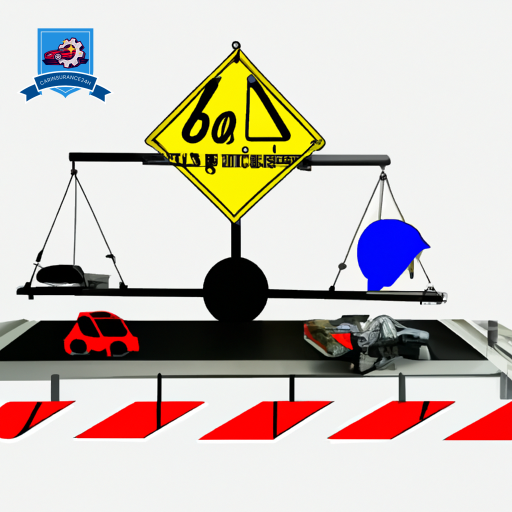
After evaluating the impact of deductibles on premiums and financial readiness, it becomes imperative to examine one’s risk exposure to select appropriate car insurance limits. Risk exposure in car insurance is a measure of the potential financial loss an individual might face if involved in an accident or other vehicle-related incident. This assessment is critical in determining how much coverage one actually needs, beyond the basic legal requirements. It is influenced by several factors, including one’s risk tolerance and geographic location.
Risk tolerance is an individual’s comfort level with the potential financial loss they could incur. Some people might opt for higher deductibles and lower premiums because they have the financial resources to cover significant out-of-pocket expenses in the event of an accident. Others might prefer to pay higher premiums for lower deductibles to minimize out-of-pocket costs if an accident happens.
Geographic location plays a significant role in determining risk exposure. The likelihood of certain types of incidents varies by location due to:
- Traffic density
- Weather conditions
- Crime rates
For instance, living in an area with heavy snowfall increases the risk of accidents due to slippery roads, thereby possibly necessitating higher coverage limits. Similarly, residing in a high-crime area might increase the risk of theft or vandalism, influencing the decision to acquire all-inclusive coverage.
Exploring Umbrella Policies

Umbrella policies offer an additional layer of protection, extending coverage beyond the limits of standard auto insurance policies to safeguard against substantial financial losses. These policies are designed to kick in where your traditional car insurance leaves off, providing an extra security net in the event of large claims or lawsuits that exceed your primary insurance coverage. This level of protection is particularly important for individuals with significant assets or those who may be at higher risk of being sued for damages.
One of the key advantages of umbrella policies is the flexibility they offer through coverage customization. Policyholders can adjust their coverage based on their personal risk assessment, financial standing, and specific needs. This tailored approach assures that individuals are neither underinsured nor paying for unnecessary coverage, striking the perfect balance between protection and cost.
Moreover, umbrella policies often come with the option of policy bundling. Many insurance providers offer discounts and incentives for customers who bundle their umbrella policy with other types of insurance, such as auto, home, or boat insurance. This not only simplifies the insurance management process by consolidating policies under one provider but also can lead to significant savings on premiums.
Ultimately, exploring umbrella policies is a crucial step in choosing the right car insurance limits. By offering an additional layer of security, customizable coverage options, and potential savings through policy bundling, umbrella policies serve as a vital tool in protecting against the financial repercussions of major claims or lawsuits.
Reviewing Coverage Annually
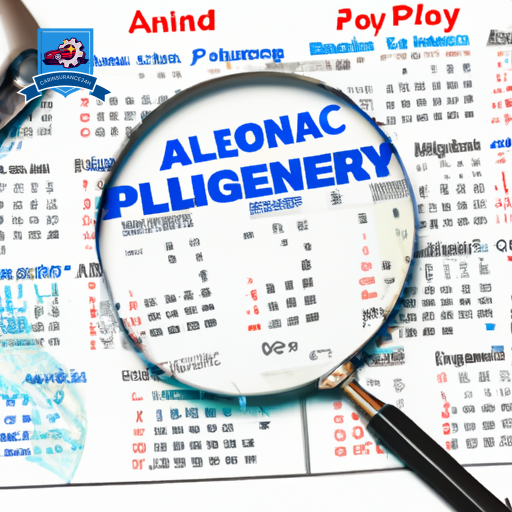
While exploring umbrella policies provides a foundational understanding of additional coverage options, it is equally important to review car insurance coverage annually to guarantee it remains aligned with current needs and circumstances. This annual review ensures that your policy reflects any significant changes in your life, such as buying a new car, moving to a different area, or changes in your driving habits. It’s also an opportune moment to assess the efficiency of the claim process and explore potential policy discounts.
The significance of this annual review can be emphasized through the following points:
-
Adjustment of Coverage Limits: Circumstances change, and so do insurance needs. An annual review can help you decide if you need higher or lower coverage limits based on your current situation, potentially saving you money or providing better protection.
-
Exploration of Policy Discounts: Insurers often update their discount offerings. An annual review is a prime time to inquire about new discounts you may now qualify for, such as those for safe driving, security features on your vehicle, or bundling policies.
-
Evaluation of the Claim Process: It’s important to understand how your insurer handles claims before you find yourself in a situation where you need to make one. The annual review period is an excellent time to ask questions about the claim process, ensuring you’re comfortable with your insurer’s procedures.
Frequently Asked Questions
How Can Changes in State Laws Affect My Car Insurance Limits Requirements Over Time?
State legislation and insurance regulation evolve, impacting car insurance limits. As laws change, requirements may increase or decrease, necessitating adjustments to your coverage. It’s crucial to stay informed and adapt your policy accordingly.
What Role Does My Driving History Play in Determining My Ideal Car Insurance Limits?
Your driving history, including traffic tickets and accident rates, heavily influences your ideal car insurance limits. Insurers assess these factors to gauge risk, potentially adjusting coverage requirements and premiums accordingly to mitigate exposure to claims.
How Can Advancements in Car Safety Technology Impact My Decision on Insurance Limits?
Advancements in car safety technology, particularly autonomous vehicles and tech upgrades, greatly reduce accident risks. This development could influence the reassessment of necessary insurance limits, potentially allowing for adjustments in coverage based on enhanced vehicle safety features.
In What Ways Can My Choice of Car Insurance Limits Influence My Premiums in the Long Term?
Selecting best car insurance limits directly impacts long-term premiums, with a study showing a 20% variance based on risk assessment and policy comparison. This decision underscores the balance between protection and financial responsibility.
Are There Specific Strategies for Young Drivers or Those With High-Performance Vehicles to Select Their Insurance Limits?
Selecting insurance limits necessitates considering driver demographics and vehicle value, particularly for young drivers or high-performance vehicle owners, to guarantee inclusive coverage while balancing cost-effectiveness and regulatory compliance. Strategic evaluation of these factors is imperative.


